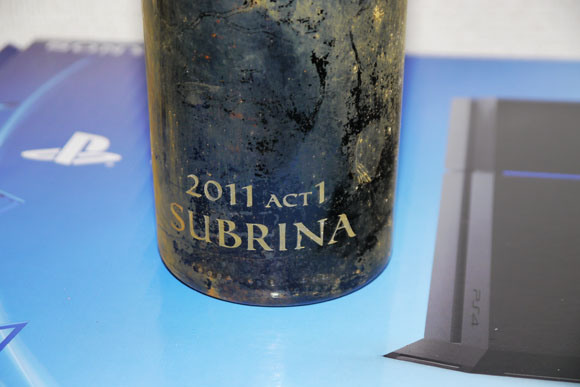
While Japan’s most iconic alcoholic beverage is the indigenous brew known abroad as sake (and as nihonshu at home), there are Japanese winemakers as well. Many are located in Yamanashi Prefecture, where local wineries hold an annual festival which we visited this past fall.
However, the last bottle of vino we enjoyed didn’t age in the mountains of Yamanashi, or the highlands of any other Japanese prefecture for that matter. Instead, our most recently purchased wine spent seven months aging at the bottom of the sea.
Technically, the wine called Subrina is a bit of an international collaboration. The shiraz grapes used in its production grow well in warm, dry climes such as South Africa, which is where the wine is initially produced.
After bottling, the wine is shipped to the town of Minami Izu-cho in Japan’s Shizuoka Prefecture. Minami Izu-cho sits the stretch of coastline known as Cape Oku Irozaki, and shortly after their arrival in Japan the bottles are loaded onto pallets and banished to the bottom of the abyss.
There the Subrina sits, maturing in its unique environment. Divers come to check on its progress once every two months, and after seven months’ time, the wine is hauled back to the surface and sold to the thirsty and curious.
The bottles are stacked as they age beneath the surface of the sea, and it’s said that even these slight differences in depth cause subtle differences in flavor. Subrina is sold in three different varieties, with the white C Type aging closest to the surface, the red B Type below, and the red A Type at the very bottom.
Despite its 12,000 yen (US $120) price tag being a 2,000 yen premium over the others, we decided to order a bottle of A Type. After all, why settle for wine that was almost aged on the seafloor, when for just a little more you can have the genuine article? Since we didn’t have the proper scuba gear to pick up our wine in person, we had it delivered.
There are stories of customers unboxing their Subrina to find the bottle covered with algae or barnacles. We didn’t have anything quite so dramatic on ours, but its appearance still made where it had spent the last 28 weeks immediately evident.
The neck of the bottle is covered with a thick wax seal. We’re sure our local wine shop could sell us a sophisticated tool for removing it, but since the bottle already looked like something you’d bring to a pirate Christmas party, we decided to hack it off with a knife.
▼ Arrrrr!
With that taken care of, we popped the cork, and the wine’s intense aroma filled the room as we poured a glass.
We took a sip, and were immediately satisfied with our purchase. The Subrina A Type has excellent presence and mouth feel, with tannins that are noticeable, but not in any way overpowering. If you’ll pardon the pun, we’d describe them, and the flavor, as deep.
If there was one shortcoming to our experience, it was that sipping our first glass of submarine wine made us really want a nice steak to pair with it. Unfortunately though, due to the Subrina A Type’s less than economical price, that wasn’t quite in the budget, but the great thing about good red wine is that somewhere around the third glass, we’d forgotten all about our disappointment over not having any high-grade beef.
▼ And by the fourth glass, we’d stopped caring about the fact that we didn’t even own a proper table.
Related: Subrina
Top image: RocketNews24
Insert images: Subrina, RocketNews24
[ Read in Japanese ]

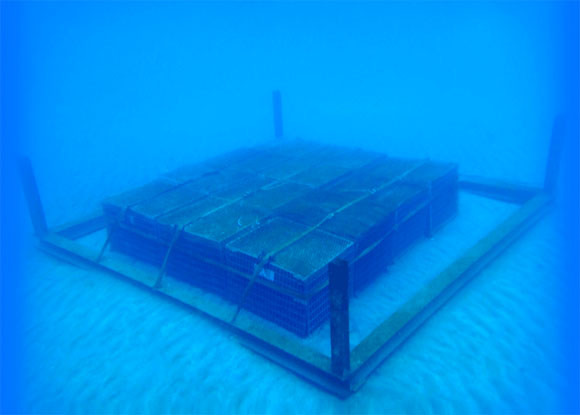

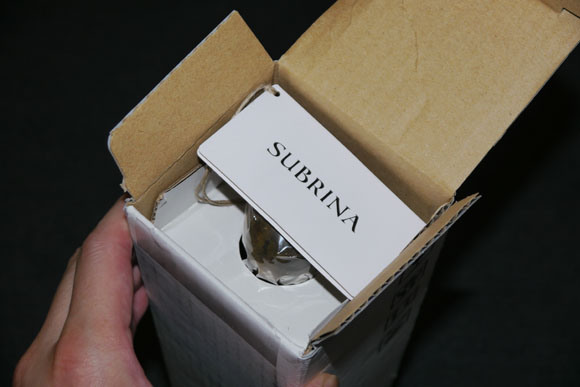
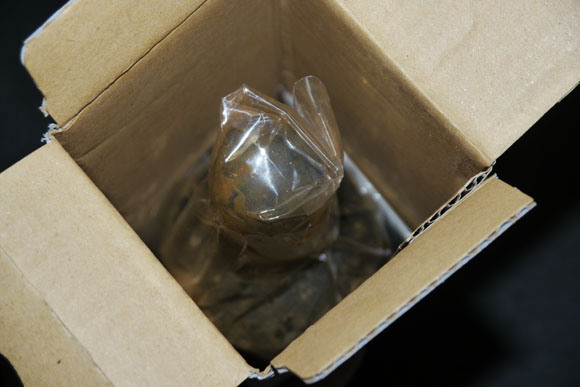
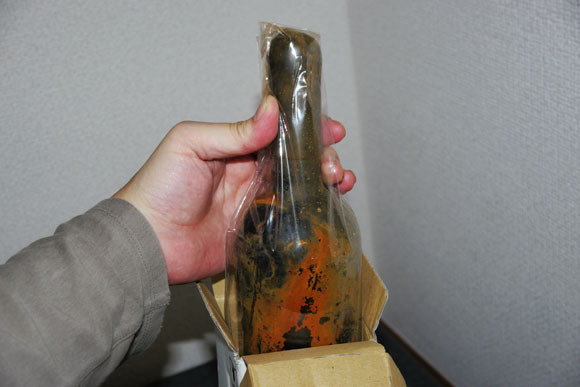
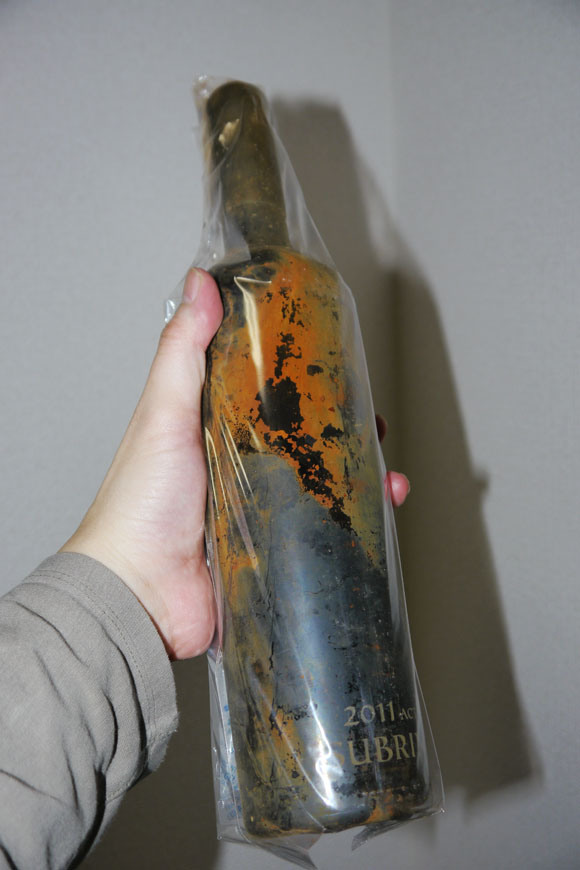

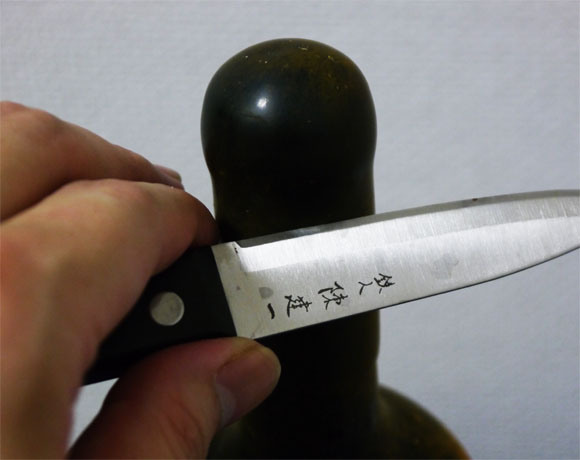
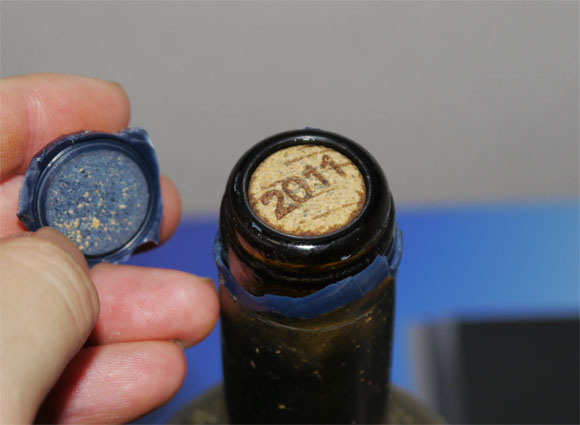
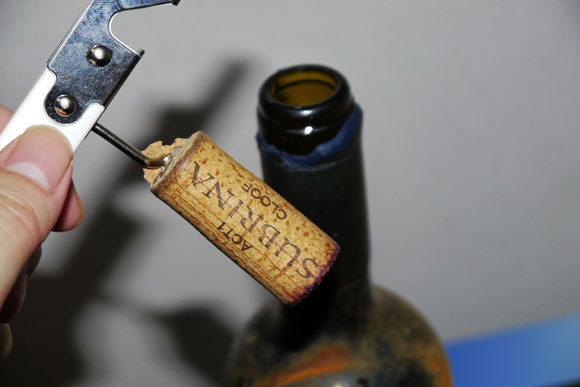
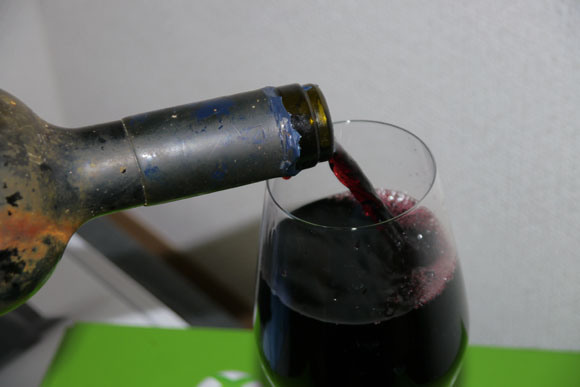
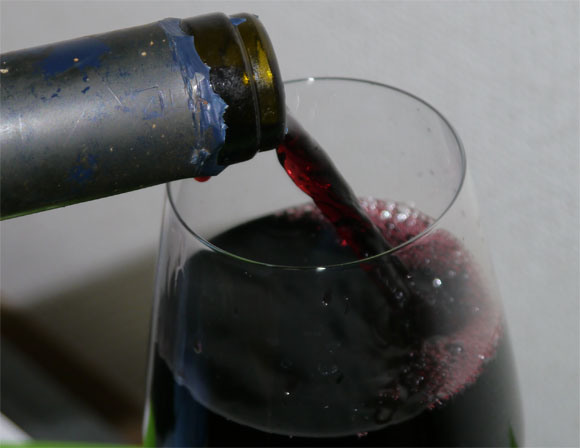
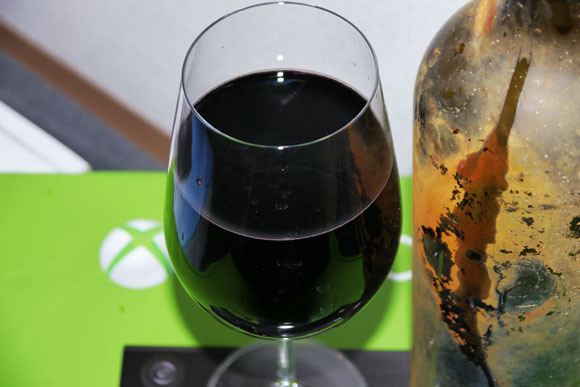
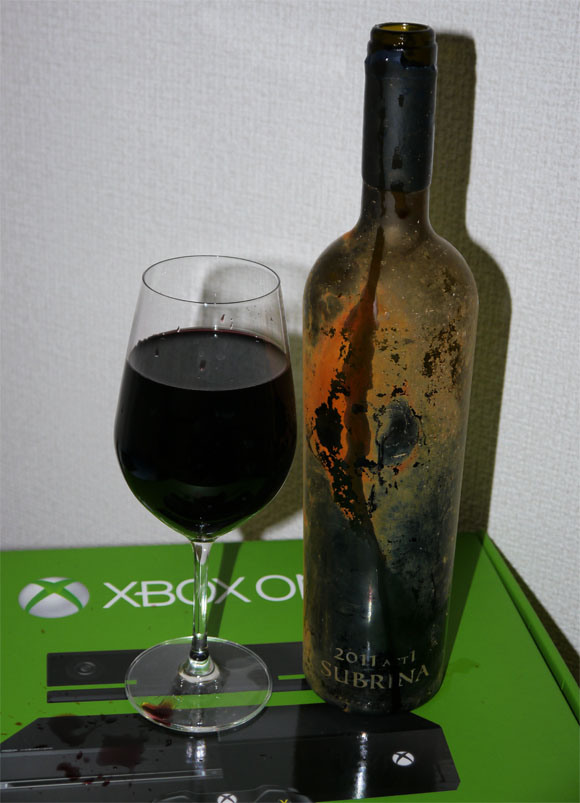
 We try the YU Sparkling Wine, the ultimate wine to pair with sushi
We try the YU Sparkling Wine, the ultimate wine to pair with sushi Does Japan’s green tea white wine taste like tea, wine, or something else entirely?【Taste Test】
Does Japan’s green tea white wine taste like tea, wine, or something else entirely?【Taste Test】 Drinking wine made from the only train station platform vineyard in Japan
Drinking wine made from the only train station platform vineyard in Japan People in Japan are obsessed with a French holiday where you celebrate by bathing in a pool of wine
People in Japan are obsessed with a French holiday where you celebrate by bathing in a pool of wine Sushi Wine doesn’t pair well with raw fish, but we’re still going to buy another bottle
Sushi Wine doesn’t pair well with raw fish, but we’re still going to buy another bottle McDonald’s new Happy Meals offer up cute and practical Sanrio lifestyle goods
McDonald’s new Happy Meals offer up cute and practical Sanrio lifestyle goods Starbucks reopens at Shibuya Scramble Crossing with new look and design concept
Starbucks reopens at Shibuya Scramble Crossing with new look and design concept Is the new Shinkansen Train Desk ticket worth it?
Is the new Shinkansen Train Desk ticket worth it? More foreign tourists than ever before in history visited Japan last month
More foreign tourists than ever before in history visited Japan last month Randomly running into a great sushi lunch like this is one of the best things about eating in Tokyo
Randomly running into a great sushi lunch like this is one of the best things about eating in Tokyo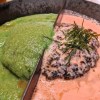 Hamburg and Hamburg Shibuya: A Japanese restaurant you need to put on your Tokyo itinerary
Hamburg and Hamburg Shibuya: A Japanese restaurant you need to put on your Tokyo itinerary Our reporter takes her 71-year-old mother to a visual kei concert for the first time
Our reporter takes her 71-year-old mother to a visual kei concert for the first time Disney princesses get official manga makeovers for Manga Princess Cafe opening in Tokyo
Disney princesses get official manga makeovers for Manga Princess Cafe opening in Tokyo Tokyo’s most famous arcade announces price increase, fans don’t seem to mind at all
Tokyo’s most famous arcade announces price increase, fans don’t seem to mind at all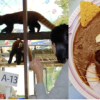 Watch red pandas while you eat red panda curry at Japan’s Safari Land
Watch red pandas while you eat red panda curry at Japan’s Safari Land We try out “Chan Ramen”, an underground type of ramen popular in the ramen community
We try out “Chan Ramen”, an underground type of ramen popular in the ramen community Foreign English teachers in Japan pick their favorite Japanese-language phrases【Survey】
Foreign English teachers in Japan pick their favorite Japanese-language phrases【Survey】 Beautiful new Final Fantasy T-shirt collection on the way from Uniqlo【Photos】
Beautiful new Final Fantasy T-shirt collection on the way from Uniqlo【Photos】 There’s a park inside Japan where you can also see Japan inside the park
There’s a park inside Japan where you can also see Japan inside the park New Studio Ghibli bedding sets are cool in all senses of the word
New Studio Ghibli bedding sets are cool in all senses of the word Japanese convenience store packs a whole bento into an onigiri rice ball
Japanese convenience store packs a whole bento into an onigiri rice ball Hanton rice — a delicious regional food even most Japanese people don’t know about, but more should
Hanton rice — a delicious regional food even most Japanese people don’t know about, but more should New Pokémon cakes let you eat your way through Pikachu and all the Eevee evolutions
New Pokémon cakes let you eat your way through Pikachu and all the Eevee evolutions Studio Ghibli releases Kiki’s Delivery Service chocolate cake pouches in Japan
Studio Ghibli releases Kiki’s Delivery Service chocolate cake pouches in Japan Japan’s bone-breaking and record-breaking roller coaster is permanently shutting down
Japan’s bone-breaking and record-breaking roller coaster is permanently shutting down New definition of “Japanese whiskey” goes into effect to prevent fakes from fooling overseas buyers
New definition of “Japanese whiskey” goes into effect to prevent fakes from fooling overseas buyers Foreign passenger shoves conductor on one of the last full runs for Japan’s Thunderbird train
Foreign passenger shoves conductor on one of the last full runs for Japan’s Thunderbird train Our Japanese reporter visits Costco in the U.S., finds super American and very Japanese things
Our Japanese reporter visits Costco in the U.S., finds super American and very Japanese things Kyoto bans tourists from geisha alleys in Gion, with fines for those who don’t follow rules
Kyoto bans tourists from geisha alleys in Gion, with fines for those who don’t follow rules Studio Ghibli unveils Mother’s Day gift set that captures the love in My Neighbour Totoro
Studio Ghibli unveils Mother’s Day gift set that captures the love in My Neighbour Totoro Domino’s Japan now sells…pizza ears?
Domino’s Japan now sells…pizza ears? New Japanese KitKat flavour stars Sanrio characters, including Hello Kitty
New Japanese KitKat flavour stars Sanrio characters, including Hello Kitty Kyoto creates new for-tourist buses to address overtourism with higher prices, faster rides
Kyoto creates new for-tourist buses to address overtourism with higher prices, faster rides Sales of Japan’s most convenient train ticket/shopping payment cards suspended indefinitely
Sales of Japan’s most convenient train ticket/shopping payment cards suspended indefinitely Sold-out Studio Ghibli desktop humidifiers are back so Totoro can help you through the dry season
Sold-out Studio Ghibli desktop humidifiers are back so Totoro can help you through the dry season Japanese government to make first change to romanization spelling rules since the 1950s
Japanese government to make first change to romanization spelling rules since the 1950s Ghibli founders Toshio Suzuki and Hayao Miyazaki contribute to Japanese whisky Totoro label design
Ghibli founders Toshio Suzuki and Hayao Miyazaki contribute to Japanese whisky Totoro label design Doraemon found buried at sea as scene from 1993 anime becomes real life【Photos】
Doraemon found buried at sea as scene from 1993 anime becomes real life【Photos】 Tokyo’s most famous Starbucks is closed
Tokyo’s most famous Starbucks is closed One Piece characters’ nationalities revealed, but fans have mixed opinions
One Piece characters’ nationalities revealed, but fans have mixed opinions We asked a Uniqlo employee what four things we should buy and their suggestions didn’t disappoint
We asked a Uniqlo employee what four things we should buy and their suggestions didn’t disappoint Princesses, fruits, and blacksmiths: Study reveals the 30 most unusual family names in Japan
Princesses, fruits, and blacksmiths: Study reveals the 30 most unusual family names in Japan Studio Ghibli’s new desktop Howl’s Moving Castle will take your stationery on an adventure
Studio Ghibli’s new desktop Howl’s Moving Castle will take your stationery on an adventure Sink or drink? Japan celebrates arrival of this year’s Beaujolais Nouveau with special wine-bath
Sink or drink? Japan celebrates arrival of this year’s Beaujolais Nouveau with special wine-bath We hunt for Dom Pérignon in these wine fukubukuro lucky bag boxes from Kaldi
We hunt for Dom Pérignon in these wine fukubukuro lucky bag boxes from Kaldi Can’t finish all your sake? Try bathing in it for healthy, younger-looking skin!
Can’t finish all your sake? Try bathing in it for healthy, younger-looking skin! Mos Burger’s new luxury burger contains 0.18 percent alcohol
Mos Burger’s new luxury burger contains 0.18 percent alcohol Drink Green! We check out the amazing “Green Tea Party” presented by Isetan and Ito En! 【Pics】
Drink Green! We check out the amazing “Green Tea Party” presented by Isetan and Ito En! 【Pics】 Attack on sobriety: Round 2! This time, plum wine/juice with limited edition character labels
Attack on sobriety: Round 2! This time, plum wine/juice with limited edition character labels Kyoto tea store collaborates with local winemaker to create deliciously green matcha white wine
Kyoto tea store collaborates with local winemaker to create deliciously green matcha white wine Okonomiyaki Wine: Japan’s savory pancakes just got a new sidekick
Okonomiyaki Wine: Japan’s savory pancakes just got a new sidekick We try coffee with cheese and wine pairings at a stylish new Starbucks cafe in Tokyo
We try coffee with cheese and wine pairings at a stylish new Starbucks cafe in Tokyo We visit Kyoto’s monk bar for some spiritual spirits
We visit Kyoto’s monk bar for some spiritual spirits Fans can toast classic anime Utena’s 20th anniversary with $1,785 bottle of wine, rose liqueur
Fans can toast classic anime Utena’s 20th anniversary with $1,785 bottle of wine, rose liqueur These 7-Elevens are gettin’ fancy! We try their pate and terrine【Taste Test】
These 7-Elevens are gettin’ fancy! We try their pate and terrine【Taste Test】 Class up your campsite with these Japanese sake pouches designed for the outdoors
Class up your campsite with these Japanese sake pouches designed for the outdoors Artist recreates famous Japanese ukiyo-e paintings using fine wines
Artist recreates famous Japanese ukiyo-e paintings using fine wines Japanese sake breaks new ground with a variety specially blended to pair well with chocolate
Japanese sake breaks new ground with a variety specially blended to pair well with chocolate Japanese glassworker shows off adult-oriented creations, leaves us impressed and slightly afraid
Japanese glassworker shows off adult-oriented creations, leaves us impressed and slightly afraid
Leave a Reply